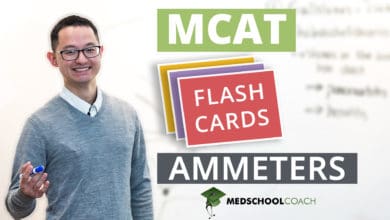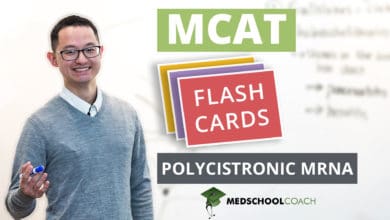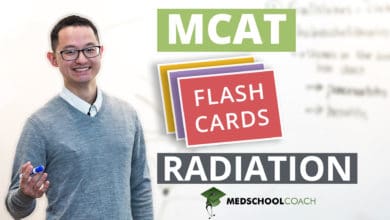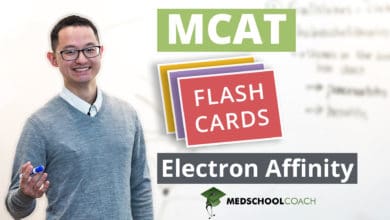MCAT Flashcards: 1,3-Diaxial Interactions
What are 1,3-Diaxial Interactions? Ken Tao is an MCAT expert and explains that these are steric interactions between ring substituents two carbons away in the axial position. These are unfavorable, so all large substituents must be in the equatorial position.
Full Transcription:
In this flash card video, we’re going to discuss “what are 1,3-diaxial interactions?” 1,3-diaxial interactions are steric interactions between axial substituents two carbons away on a cyclohexane ring. To better understand how this works, let’s take a look at this board.
So here we have a cyclohexane ring. You can see on this carbon right here we have a methyl group in the axial position. We can then count two carbons away in either direction.
So let’s say this is carbon 1. So then you have carbon 2, 3. And here on carbon 3 you have a hydrogen in the axial position. And if you can opposite direction, carbon 1, 2, 3, you can also see that there is a hydrogen in the axial position. This is what is referred to 1,3-diaxial.
Now, because these groups are all in the axial positions, they’re close enough that their electron clouds will partially overlap, and because electrons are all negatively charged, when the electron clouds overlap, that is an unfavorable interaction.
So you can see in red here, we’ve drawn the steric clashing that’s going on between these 1,3-diaxial substituents. So this is bad. So what this means is any time you have a large substituent, that large substituent needs to be in that equatorial position as you can see on this board here.
So again, we have the methyl group, but now it’s in an equatorial position where it won’t experience these 1,3-diaxial interactions. So this is good.
On the exam, this means that any time you’re selecting a molecule as an anti-choice, you can always eliminate any answer choices where you have a large substituent in the axial position.



